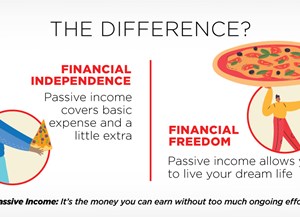19 May 2019
Prudent Investing - A beginners guide to stocks
If you’ve recently set off on your journey to financial wellness, you have an important decision to make: how do you plan to make your wealth grow?
Any financially savvy person will be regularly saving money to meet their future monetary goals, whether it is to buy a home in 10 years, pay for your children’s university education in two decades’ time, or retire without any worries when you turn 60. But will simply stashing away a portion of your salary be enough to fulfill such objectives? Not in most circumstances.
Financial targets like those described above represent the major expenses in a person’s life. In order to afford them, you must grow your savings by investing. One kind of investment that’s historically proven to earn you the most profit in the long-term has been stocks.
So, what are stocks? And what does it mean when you buy stocks from a particular company? To answer these questions, let’s first take a look at where stocks come from.
When a company first comes into being, its only owners are the founders and any initial investors it may have. Take, for example, a hypothetical tech start-up that is owned by three brothers. When they first launched, their wealthy uncle agreed to bankroll the company’s early operations. In exchange, they gave him ¼ ownership and split the rest amongst themselves.
Now let’s suppose that the brothers’ tech start-up takes off and they realise that they must capitalise on the momentum to expand their operations and hire more staff to cater to the rising customer demand. In order to afford this expansion, they’re likely to need more capital than their uncle may be willing to supply. So what do they do?
Initially, they may be able to find more private investors and offer them a share of ownership, thereby reducing their own. But eventually, as their business keeps flourishing and even more capital is needed, they can widen their net and offer company shares to investors in the public, like yourself, through an initial public offering (IPO).
In an IPO, each share of the business is sold as a ‘stock’ that represents the investor’s ownership of the business. The more stocks you buy, the greater your stake in the company. As an investor, you make a decision on whether to buy a particular company’s shares based on your understanding of its industry standing, profitability and policies for shareholders. Of course, a professional financial advisor is best suited to help you develop this understanding and apprise you of a stock’s potential performance.
So, what happens after you buy stock? After its initial growth period in which the company tends to re-invest profit to further expansion, the company may reward your initial investment with dividends, which are payouts from the company’s profits paid to you in amounts proportionate to the number of shares you own. The value and frequency of your earnings from dividends depends on the type of stock you have selected.
Your investment also grows due to capital gains, that is, the increasing market value of the stock. As the company’s profits grow, so does the value of its stock. A stock’s value also grows when a company repurchases its stocks from public investors, allowing each share to represent greater ownership in the business. Again, the long-term growth of the stock depends on its type.
Now that we’ve understood the main ways investors earn money through stocks, let’s go into the types of stock. A company can issue common stock (which constitute the majority of its shares) and preferred stock. There are several important distinctions between the two.
When you invest in common stock, you’re signing up for the following:
- i) the possibility of earning a proportionate share in profits, as described above. It’s important to note that common stock dividends are lower and likely to vary; moreover, in extreme cases such as bankruptcy or liquidation, the company is not bound to pay dividends to common shareholders until its creditors, bondholders and preferred shareholders are paid. (However, investors can reduce this risk by researching a company’s financial statements and history of earnings before buying the stock.)
- ii) Volatile stock prices, which means the stock can gain or lose value over time. Generally, it’s assumed that common stock will accrue significant value over time.
iii) Voting rights, which gives you the power to influence the company’s financial future by electing its board of directors, which is responsible for hiring the top tier of the company’s management, and for deciding when and how profits will be disbursed to investors.
When you invest in preferred stock, you’re signing up for a more protected status. This means you get:
- i) Fixed-value dividends that tend to have higher earnings than common stock. Dividends are paid to preferred shareholders according to a preset schedule, and they are guaranteed earnings, even if the company is struggling financially. Preferred stock investors have more assured regular returns.
- ii) Less volatile stock prices, which means the value neither rises nor falls as significantly as common stock in the long term.
iii) No voting rights in the case of most companies.
Based on these distinct characteristics, common stock is generally recommended for investors who wish for their initial investment to grow over the long-term while preferred stock is recommended for investors looking for regular passive income.
In order to determine which companies are worth your investment, you must first determine what will suit your financial profile. Get in touch with an experienced financial advisor who can help you secure your future with professional advice.











